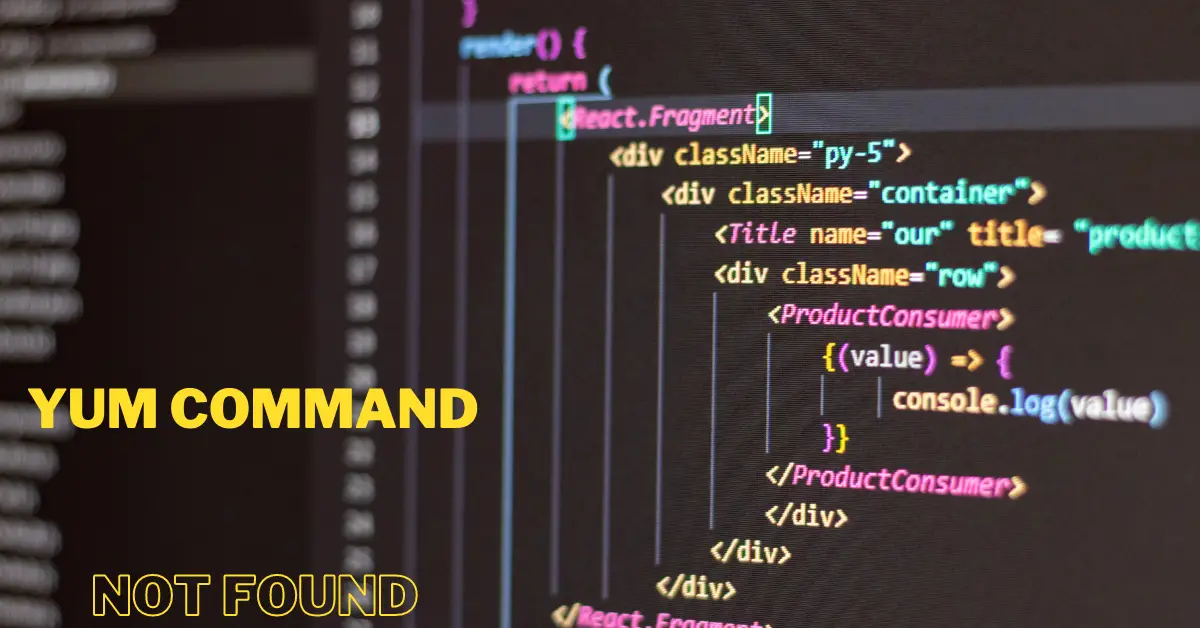Bowagn Wagons carts Foldable with Wheels, Heavy Duty Collapsible Folding Wagon Carts, Utility Grocery Wagon Cart for Beach Sports Garden Shopping Camping Wheelbarrows…
$48.98 (as of February 28, 2025 01:08 GMT +00:00 - More infoProduct prices and availability are accurate as of the date/time indicated and are subject to change. Any price and availability information displayed on [relevant Amazon Site(s), as applicable] at the time of purchase will apply to the purchase of this product.)Introduction
If you are a Linux user, you might have encountered the frustrating “yum command not found” error at some point. This error often occurs when the system cannot locate the “yum” package manager, which is commonly used for package installation, removal, and updates in various Linux distributions. However, fear not! In this article, we will explore the reasons behind this issue and provide step-by-step solutions to resolve it effectively.
Understanding the “yum command not found” Error
What is Yum?
Before we delve into the error, let’s understand what “yum” is. Yum, short for Yellowdog Updater Modified, is a package manager used in Red Hat-based Linux distributions like CentOS and Fedora. It simplifies the process of installing, removing, and updating software packages on your system.
Common Causes of the Error
The “yum command not found” error can occur due to various reasons, some of which include:
- Incomplete Yum Installation: If the Yum package manager is not installed correctly on your system, you might encounter this error.
- Incorrect Path Variable: The “yum” executable might not be included in your system’s PATH variable, leading to the command not being recognized.
- Package Manager Unavailability: In some cases, the Yum package manager might not be available in your Linux distribution or repository.
Troubleshooting the “yum command not found” Error
Step 1: Verify Yum Installation
The first step is to ensure that Yum is installed on your system. Open your terminal and type the following command:
yum --version
Step 2: Install Yum
To install Yum on your system, you can use the package manager specific to your Linux distribution. For example:
For CentOS/RHEL:
sudo yum install yum
For Fedora:
sudo dnf install yum
Step 3: Check the PATH Variable
If Yum is installed, but you are still encountering the error, it might be due to an incorrect PATH variable. You can add the Yum path to your system’s PATH variable by editing the ~/.bashrc file:
export PATH=$PATH:/usr/bin
After making this change, reload the shell or run source ~/.bashrc to apply the changes.
Step 4: Refresh Yum Cache
Sometimes, the Yum cache may be outdated, causing the error. To refresh the cache, use the following command:
sudo yum clean all
sudo yum makecache
Step 5: Check Repository Configuration
Ensure that your Yum repository configuration is correct. Incorrect configurations might prevent the “yum” command from being found. Verify the configurations in the /etc/yum.repos.d/ directory.
Conclusion
The “yum command not found” error can be frustrating, especially for Linux users who heavily rely on package managers like Yum. However, with the troubleshooting steps provided in this article, you can easily resolve the issue and regain the functionality of the Yum package manager.
Remember to double-check your Yum installation, verify the PATH variable, refresh the Yum cache, and ensure the repository configurations are accurate. By doing so, you’ll be able to use “yum” without any hassles and continue installing and updating software packages seamlessly.
FAQs
Q: Can I use Yum on all Linux distributions?
A: Yum is primarily used in Red Hat-based distributions like CentOS and Fedora. Other distributions may use different package managers.
Q: Why is “yum” preferable over other package managers?
A: “Yum” provides robust dependency resolution and simplifies package management tasks, making it a popular choice among users.
Q: What if I still encounter issues after following the troubleshooting steps?
A: If the problem persists, there might be other system-related issues. In such cases, help from the Linux community or forums is recommended.

Greetings! I am Ahmad Raza, and I bring over 10 years of experience in the fascinating realm of operating systems. As an expert in this field, I am passionate about unraveling the complexities of Windows and Linux systems. Through WindowsCage.com, I aim to share my knowledge and practical solutions to various operating system issues. From essential command-line commands to advanced server management, my goal is to empower readers to navigate the digital landscape with confidence.
Join me on this exciting journey of exploration and learning at WindowsCage.com. Together, let’s conquer the challenges of operating systems and unlock their true potential.













